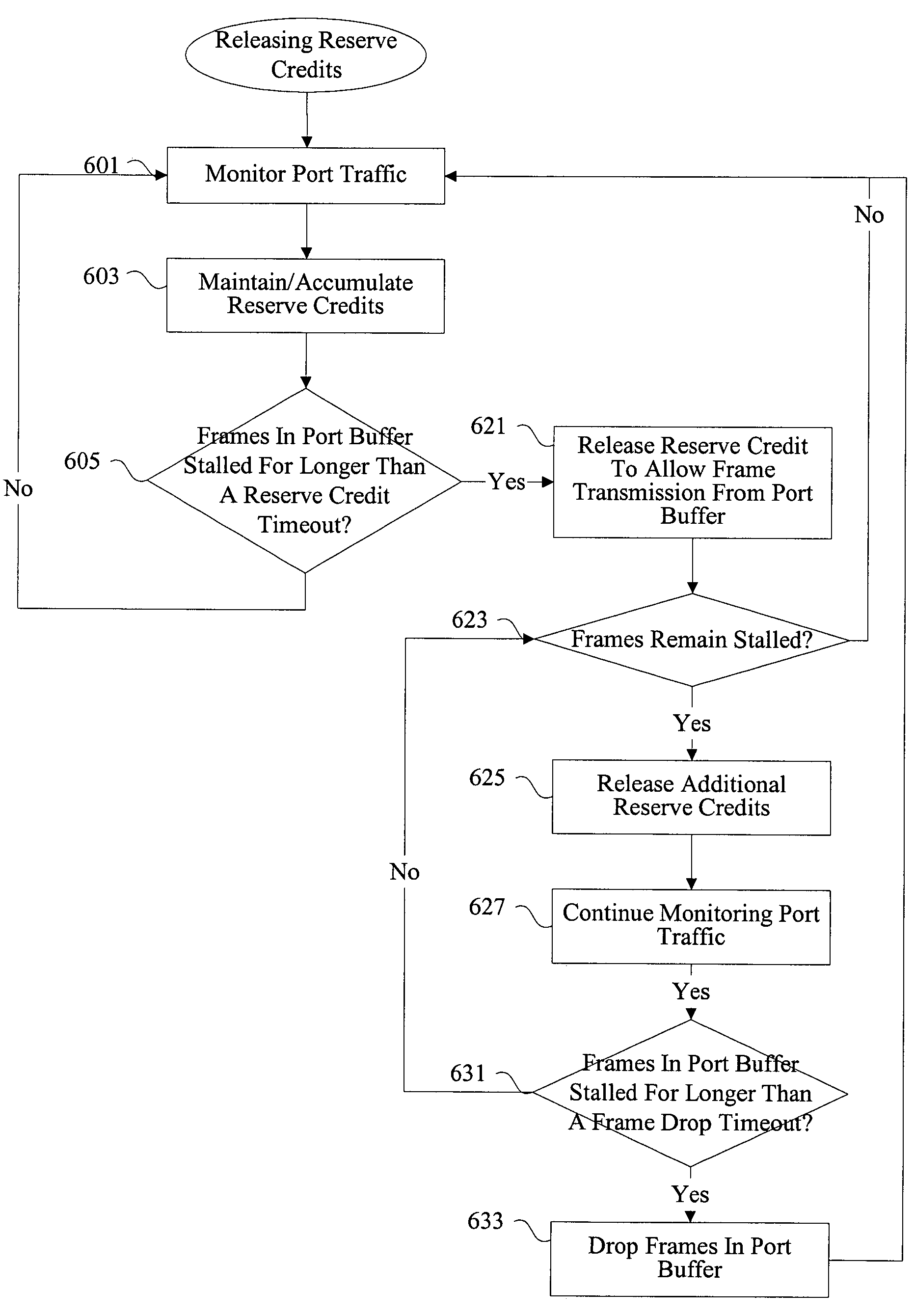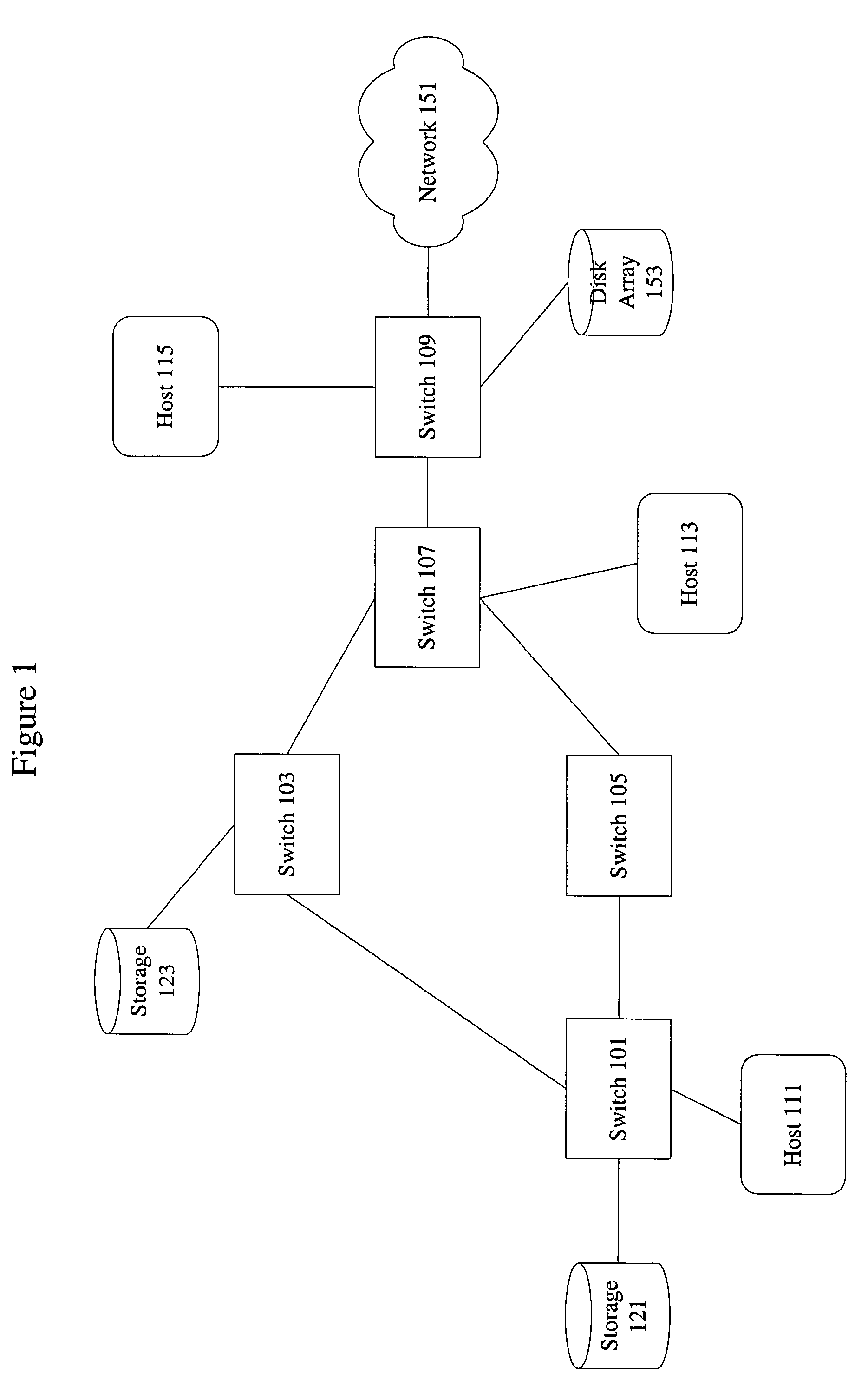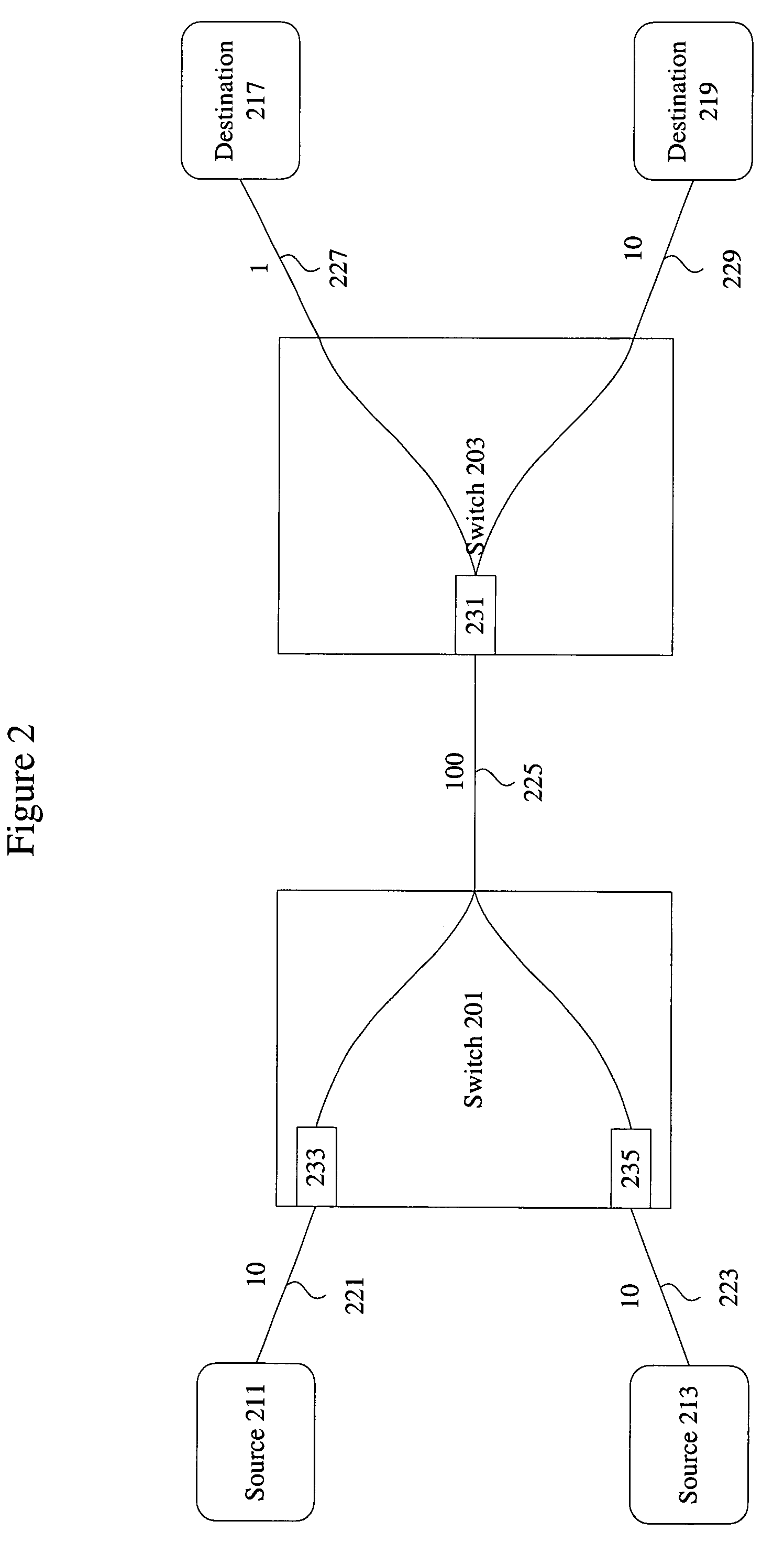Methods and apparatus for alleviating deadlock in a fibre channel network
a fibre channel network and deadlock technology, applied in the field of network congestion control, can solve the problems of poor control of end and buffer-to-buffer flow, high undesirable packet dropping, rough technique, etc., and achieve the effect of reducing deadlock and congestion and effective reduction of deadlock
- Summary
- Abstract
- Description
- Claims
- Application Information
AI Technical Summary
Benefits of technology
Problems solved by technology
Method used
Image
Examples
Embodiment Construction
[0023]Reference will now be made in detail to some specific embodiments of the invention including the best modes contemplated by the inventors for carrying out the invention. Examples of these specific embodiments are illustrated in the accompanying drawings. While the invention is described in conjunction with these specific embodiments, it will be understood that it is not intended to limit the invention to the described embodiments. On the contrary, it is intended to cover alternatives, modifications, and equivalents as may be included within the spirit and scope of the invention as defined by the appended claims.
[0024]For example, the techniques of the present invention are particularly effective in alleviating deadlock resulting from transient loops in a fibre channel network. However, the techniques of the present invention can be applied to not only deadlock resulting from transient loops, but deadlock and congestion in general. Furthermore, the techniques of the present inv...
PUM
 Login to View More
Login to View More Abstract
Description
Claims
Application Information
 Login to View More
Login to View More - R&D
- Intellectual Property
- Life Sciences
- Materials
- Tech Scout
- Unparalleled Data Quality
- Higher Quality Content
- 60% Fewer Hallucinations
Browse by: Latest US Patents, China's latest patents, Technical Efficacy Thesaurus, Application Domain, Technology Topic, Popular Technical Reports.
© 2025 PatSnap. All rights reserved.Legal|Privacy policy|Modern Slavery Act Transparency Statement|Sitemap|About US| Contact US: help@patsnap.com



